Iconography
Iconography (from Greek: εικονογραφία) refers to the making and liturgical use of icons, pictorial representations of Biblical scenes from the life of Jesus Christ, historical events in the life of the Church, and portraits of the saints. Icons are usually two-dimensional images and may be made of paint, mosaic, embroidery, weaving, carving, engraving, or other methods. A person who practices the art of iconography is called an iconographer.
Images have always been a vital part of the Church, but their place was the subject of the Iconoclast Controversy in the 8th and 9th centuries, especially in the East. The Sunday of Orthodoxy, the first Sunday of the Great Fast (Lent) every year celebrates the reestablishment of the Orthodox veneration of icons. The use of iconography is considered one of the most distinctive elements of the Byzantine Rite.
From the first centuries of Christianity, icons have been used for prayer. Orthodox Tradition tells us, for example, of the existence of an icon of the Christ during his lifetime, the Icon-Not-Made-With-Hands, and of the icons of the Theotokos immediately after him written by the All-laudable Apostle and Evangelist Luke.
Icon made by Jesus
During the time of the earthly ministry of the Savior, Abgar, ruler in the Syrian city of Edessa, was afflicted with leprosy. Reports of the great miracles performed by the Lord extended throughout Syria (Matt. 4:24) and as far as Arabia at this time. Although not having seen the Lord, Abgar believed in him and wrote a letter requesting Christ to come and heal him. Abgar sent his court painter, Ananias, with this letter to Palestine telling him to paint an image of the Divine Teacher. Ananias was not able to go near Christ because of the great many people listening to his preaching. He attempted to produce an image of the Lord Jesus Christ from afar, but could not. The Lord called Ananias and promised to send his disciple in order to heal Abgar from the leprosy and instruct him in salvation. Then the Lord called for water and a towel. He wiped His face with the towel, and on it was His Divine Image. The Savior sent the towel and a letter to Edessa back with Ananias. With thanksgiving Abgar received the sacred objects and started healing. He continued healing until the arrival of the disciple Thaddeus, Apostle of the 70. The Apostle preached the Gospel and baptized Abgar and all living in Edessa. The story is recorded by the 4th century Church historian, Eusebius of Cesarea.

